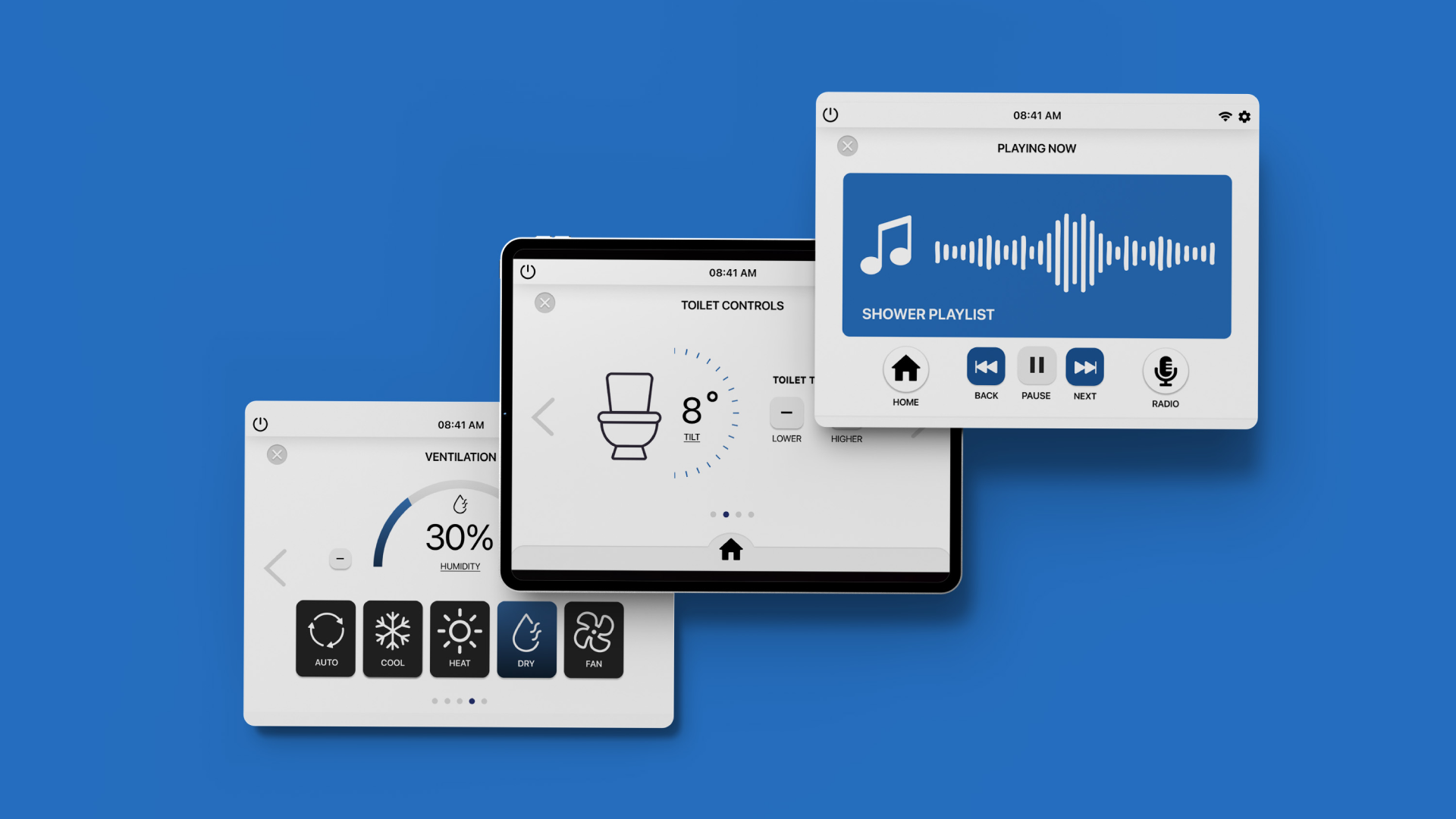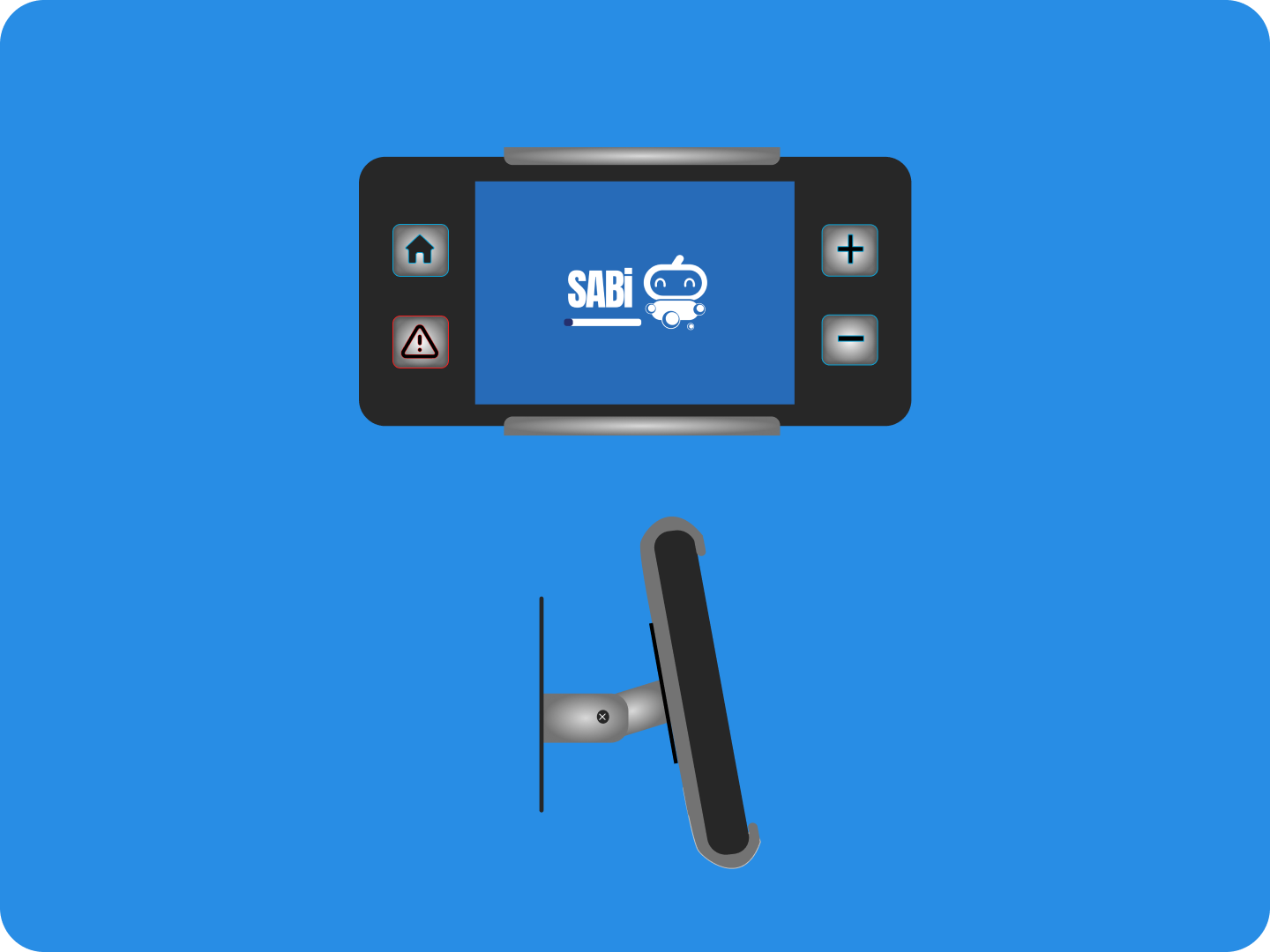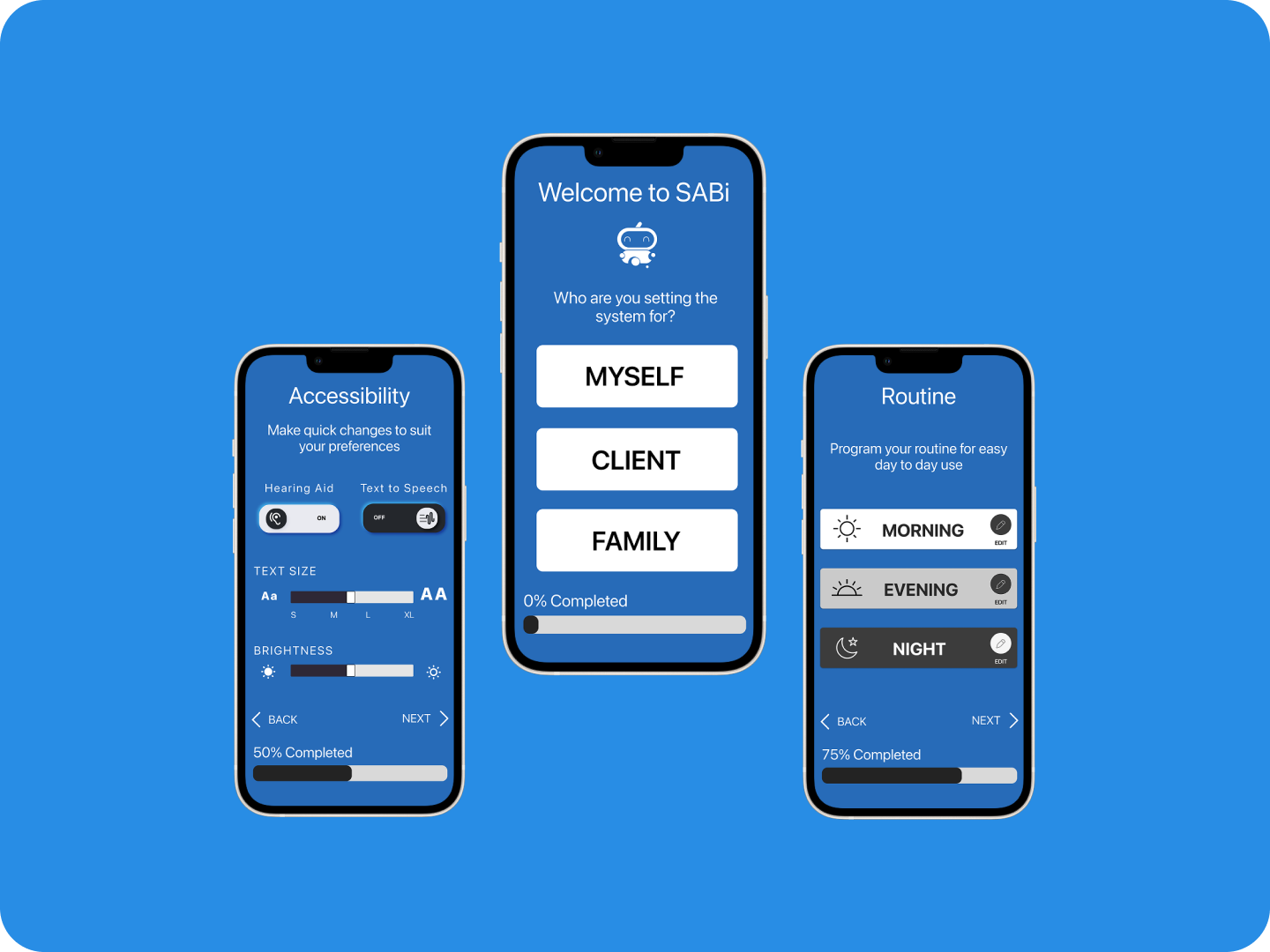Client
Uni Project
Year
2025
Application
Tablet
Overview
SABi, short for Smart Autonomous Bathroom Integration, is a user-centred, technology-driven system designed to enhance safety, accessibility, and convenience in the bathroom. Beyond its practical functionality, SABi establishes a friendly and approachable brand identity through its mascot, a simple, robot-like face helping users feel comfortable interacting with an advanced digital system.
Brief
We were tasked with creating a integrated smart technology for elderly people, encouraging them to ‘Age in Place’ with technological fixtures to address any challenges they may face whilst ageing at home. The fixtures were to be integrated into one smart system. The deliverables included a high fidelity prototype, a design document recording our process as well as a client presentation to showcase our solution.
Problem Statement
How might we design technology that is easy to learn, navigate and use, while being sustainable and low effort, to support older adults in preparing for mobility limitations?
Project Aim
Our project aimed to address real-world challenges faced by older adults in the context of a bathroom area creating a solution for impending safety risks, mobility limitations, aversion to technology, reduced cognitive ability and accessibility features for declining eye sight and hearing.
Research
Both Primary and Secondary Research was collected to inform our design. Initially we conducted a literature review and market analysis with case studies to scope existing technology. We then set out to use four methods of Data Gathering with a mixture of Qualitative and Quantitative Research which included conducting Semi-Structured Interviews, giving participants a Probing Diary, Observations in the bathroom area and an Online Survey.
My primary role in the research phase was to create an online survey, to decode responses outlining data trends and maintain informed design decisions based on findings. My role also included creating infographics and writing design rationale for the client and final design documentation.
Development
Our design features and interface were directly informed by our UX research methods. From data gathering we identified common pain point amongst seniors, specifically that many face mobility limitations, decreased strength and stamina and declining hearing or eye sight. We also identified that the most commonly used interfaces were smartphones or tablets and that most participants in our study had already fitted some type of assistive technology in their bathroom such as lever handle taps, anti slip bath mats and shower chairs.
User Testing
User testing was conducted at Evergreen Centre, with several participants in the target audience demographic. Our focus was on finding the most suitable layout, navigation and to affirm our design accessibility considerations were suitable.
After observing participants and getting feedback on the flow and usability of the tablet design, we noticed that the large buttons and text made it easier for users to navigate themselves without assistance. We also found that being able to adjust volume and text size for individuals with hearing and sight impairment could improve the layout beyond what was available. The cost of our design fittings was another thing which had to be taken into consideration as well as the orientation of the tablet screen and adding ventilation to avoid excess humidity build up which could lead to complications whilst using the tablet screen.
Methods
Our project
Future of SABi
FUTURE
Reflection
REFLECTION






